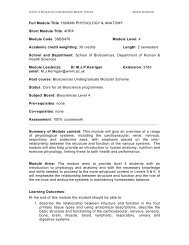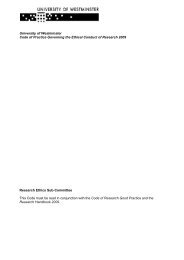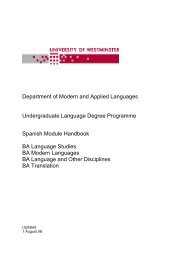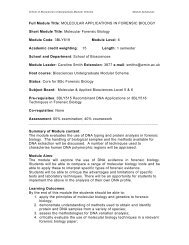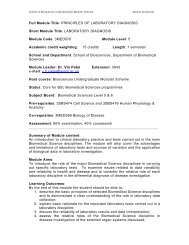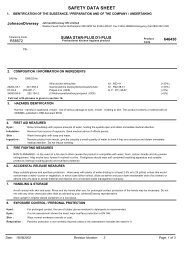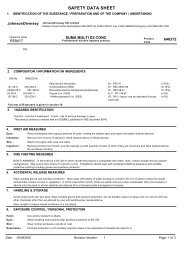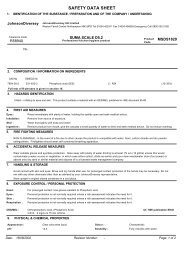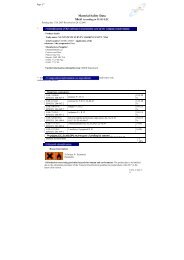CONTENTS 1. Introduction 1.1 Course Outline 1 1.2 Introduction ...
CONTENTS 1. Introduction 1.1 Course Outline 1 1.2 Introduction ...
CONTENTS 1. Introduction 1.1 Course Outline 1 1.2 Introduction ...
You also want an ePaper? Increase the reach of your titles
YUMPU automatically turns print PDFs into web optimized ePapers that Google loves.
Full Module Title: IMAGE QUALITY VERSION 2<br />
Short Module Title: IMAGE QUALITY<br />
Module Code: 2DPI616 Module Level: 6<br />
Academic Credit Weighting: 15 credits. Length: 1 semester<br />
Module Leader: Sophie Triantaphillidou extension: 4584 e-mail: triants@wmin.ac.uk<br />
School:<br />
Media, Art and Design.<br />
Department:<br />
Photographic and Digital Media<br />
Host <strong>Course</strong>:<br />
BSc(Hons) Photography and Digital Imaging<br />
Status:<br />
Option<br />
Pre-requisites:<br />
None.<br />
Co-requisites:<br />
None.<br />
Assessment:<br />
40% Written <strong>Course</strong>work<br />
60% Practical Work<br />
Summary of Module Content:<br />
The issue of image quality is examined in the context of analogue and digital imaging systems.<br />
Objective measurements of spatial and noise characteristics are explored. Image Quality metrics are<br />
introduced. Subjective/ psychophysical methods for measuring image quality are introduced.<br />
Module Aims:<br />
• To gain an understanding of issues relating to the measurement of image quality, distortion and<br />
fidelity in the evaluation of imaging systems and processes.<br />
• To explore noise measures such as variance, signal-to-noise and autocorrelation function.<br />
• To establish the application of Fourier theory to the measurement and analysis of spatial<br />
frequency response and noise power of imaging systems.<br />
• To introduce psychophysics and psychometric scaling for the subjective evaluation of image<br />
quality.<br />
• To develop an understanding of image quality metrics along with the interrelationships between<br />
perceived and measured image quality in the evaluation of imaging systems.<br />
• To gain an understanding of the influence of scene dependency in image quality judgements.<br />
• To provide students with self-directed and focused practical work, to allow them to gain<br />
experience in setting up and analysing objective and subjective experiments related to image<br />
quality.<br />
Learning Outcomes:<br />
The successful student will be able to:<br />
<strong>1.</strong> Demonstrate an understanding of the relationship between image distortion, fidelity and quality<br />
measurements.<br />
2. Demonstrate knowledge of image quality metrics in the determination of the performance of<br />
imaging systems.<br />
3. Evaluate image attributes such as sharpness and noise using objective evaluation measures such<br />
as modulation transfer functions and noise power spectra.<br />
4. Understand and use psychophysical methods and apply related statistical analysis for the<br />
evaluation of image quality.<br />
5. Understand the importance of image selection and experimental set-up in psychophysical<br />
investigations.<br />
Indicative syllabus content:<br />
Image Sharpness: Review of the Fourier transform, Measurement of the Modulation Transfer Function<br />
(MTF) in digital devices.<br />
Image Noise in digital systems: The measurement of Noise Power. Application of Noise-Power and<br />
MTFs: The transfer of noise power in imaging systems.<br />
DPI_Hbook 79 ©University of Westminster





